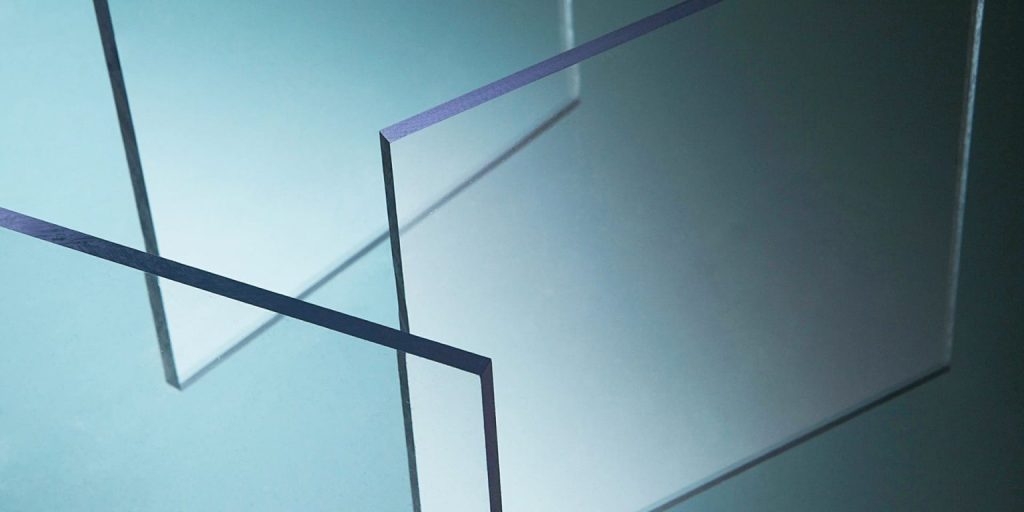Acrylic vs Polycarbonate: A Comprehensive Comparison
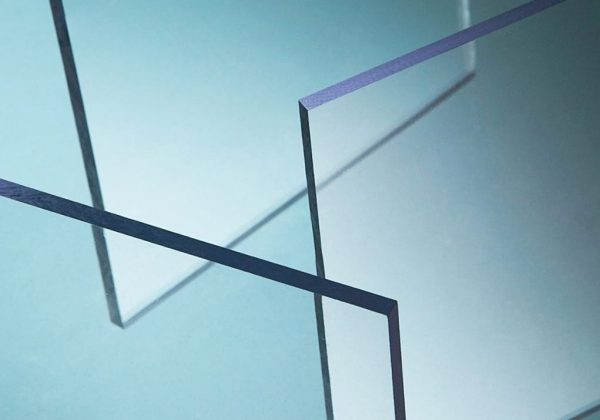
Understanding Acrylic and PolycarbonateAcrylic
Acrylic, also known as polymethyl methacrylate (PMMA), is a clear, light-weight thermoplastic that is a popular choice for applications that require transparency where high impact resistance is not a priority. It is often used in applications such as signage, displays, and furniture due to its high clarity and aesthetic appeal. Acrylic is also known for its weather resistance and its ability to transmit and control light, making it a popular choice for applications such as skylights and retail displays.
Acrylic, also known as Plexiglass or PMMA, is a transparent plastic material with high clarity and light transmission.
It is half the weight of glass, making it a lightweight alternative for various applications.
Acrylic sheets have approximately 17 times the impact resistance of glass, making it a durable choice for applications where minor impacts may occur.
It can be easily machined, cut, and drilled without cracking, offering flexibility in design and installation.
Acrylic can be polished, both for removing scratches and achieving clean edges, enhancing its aesthetic appeal.
It offers better glue bonding than polycarbonate, making it suitable for applications requiring adhesion.
Acrylic sheets are less expensive than polycarbonate, making it a cost-effective choice for many projects.
It should not be exposed to open flames as it is more flammable than polycarbonate.
Acrylic can be heated and molded into various shapes, and then reheated without losing its quality.
It is more rigid than polycarbonate and more likely to chip, requiring careful handling during installation.
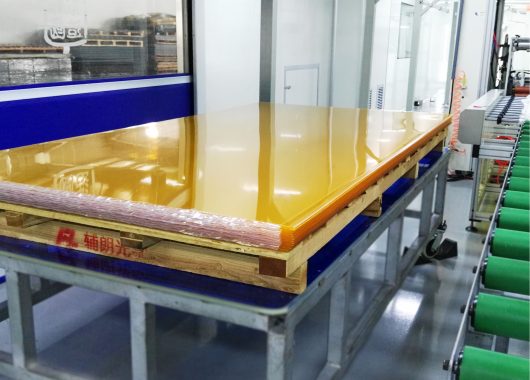
Polycarbonate
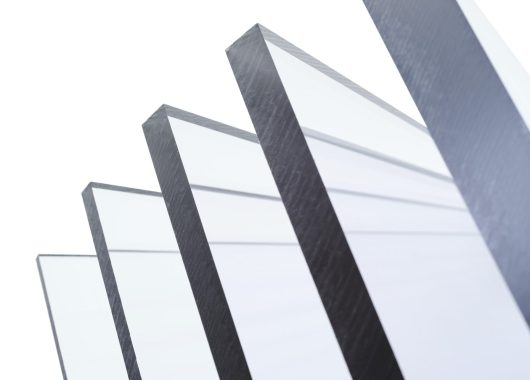
Comparing the physical properties of Polycarbonate vs Acrylic
Strength and Durability
One of the most significant differences between acrylic sheets and polycarbonate sheetslies in their strength and durability. Polycarbonate is known for its high impact resistance, being able to withstand impact 250 times more than glass, making it virtually unbreakable in most applications. This makes polycarbonate an excellent choice for applications where safety and durability are paramount, such as in bulletproof windows or protective face shields.
Acrylic, while not as strong as polycarbonate, still offers 10 times the impact resistance of glass. However, it is more rigid than polycarbonate and can crack under extreme impact. This makes acrylic more suitable for applications where high impact resistance is not a priority, but clarity and aesthetics are, such as in signage or display cases.
Environmental Impact and Sustainability
In today’s world, the environmental impact and sustainability of materials are increasingly important considerations. Both acrylic and polycarbonate have environmental impacts that should be considered.
Acrylic is a petroleum-based product and its production involves the release of harmful gases into the atmosphere. However, it is a durable material that can last for many years if properly cared for, reducing the need for replacement and waste. Additionally, acrylic can be recycled, although the process is not as widespread as for other plastics.
Polycarbonate, on the other hand, is a more energy-intensive material to produce. However, its superior durability and lifespan can offset this initial environmental cost over time. Like acrylic, polycarbonate can also be recycled, but the process is complex and not widely available.
It’s worth noting that both materials, when discarded, should be recycled or disposed of responsibly to minimize environmental impact.
Safety Considerations
Safety is another key factor to consider when choosing between acrylic and polycarbonate. As mentioned earlier, polycarbonate’s high impact resistance makes it a safer choice for applications where there is a risk of breakage or impact. Its shatter-resistant nature makes it ideal for use in safety glasses, riot shields, and other protective equipment.
Acrylic, while less impact-resistant than polycarbonate, is still considerably stronger than glass and can be a safer alternative in applications where glass might pose a risk of shattering. However, it can crack or shatter under high impact, so it’s less suitable for high-risk environments.
Versatility and Applications
Finally, the versatility and wide range of applications of both acrylic and polycarbonate further highlight their unique properties. Acrylic’s superior clarity and gloss make it ideal for use in signage, displays, and light fixtures. Its ease of fabrication and ability to be easily cut and polished also make it a popular choice for DIY projects.
Polycarbonate’s high impact resistance and heat resistance make it suitable for a wide range of applications, from bulletproof windows to electronic components. Its flexibility also allows it to be formed into complex shapes, making it a versatile material for various industries.
In conclusion, the choice between acrylic and polycarbonate will depend on the specific needs and requirements of your project. By understanding the unique properties and advantages of each material, you can make an informed decision that best suits your needs.
Light Transmission and Clarity
Both clear acrylic and polycarbonate offer excellent light transmission, making them ideal for applications that require clear visibility. Acrylic allows up to 92% of light to pass through it, slightly more than glass, making it an excellent choice for applications that require high clarity, such as display cases or windows.
Polycarbonate, while slightly less clear than acrylic, still allows up to 88% of light to pass through. However, polycarbonate is often treated to be UV-resistant, making it a better choice for outdoor applications where the material will be exposed to sunlight.
Working with Acrylic and Polycarbonate
When it comes to fabrication and installation, both acrylic and polycarbonate offer their own advantages. Acrylic can be cut more easily than polycarbonate, making it a more convenient choice for DIY projects. It can also be polished to restore its clarity, something that is more difficult to achieve with polycarbonate.
Polycarbonate, on the other hand, is more flexible than acrylic and can be bent without heating, making it more versatile in its applications. It also has a higher resistance to heat, able to handle temperatures up to 240 degrees Fahrenheit, compared to acrylic’s limit of 190 degrees Fahrenheit.
Cost Considerations
In terms of cost, acrylic plastic is generally cheaper than polycarbonate. However, the cost can vary depending on the thickness and size of the material, as well as any additional features such as UV resistance or scratch resistance. It’s also important to consider the longevity and durability of the materials.
Fabrication and Machining
Both acrylic and polycarbonate can be cut and machined using conventional tools, making them versatile materials for various applications. However, there are differences in how these materials respond to certain fabrication processes. For instance, acrylic can be more easily cut and polished than polycarbonate, making it a more convenient choice for projects that require a high degree of finish or detail. On the other hand, polycarbonate, due to its flexibility, can be cold-bent or formed without the need for heating, offering a broader range of possibilities in terms of shape and form. At Excelite, we have a wide range of manufacturing processes, including CNC machining, bonding, milling, and bending.
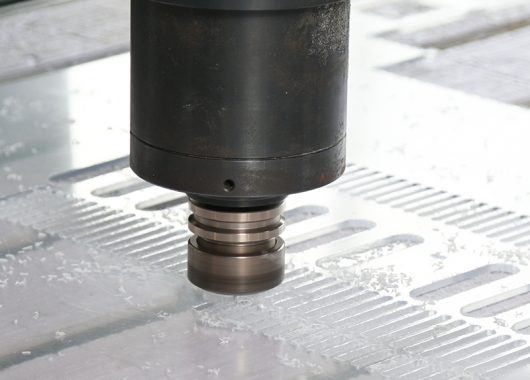
Weather Resistance and UV Stability
When it comes to weather resistance and UV stability, both materials offer advantages. Acrylic is known for its resistance to weathering and sunlight, making it a suitable choice for outdoor signage or display cases. However, continuous exposure to sunlight can cause standard polycarbonate to yellow over time. To counteract this, polycarbonate sheets can be treated to be UV-resistant, making them more suitable for outdoor applications where the material will be exposed to sunlight regularly.
Color and Aesthetic Options
Both acrylic and polycarbonate are available in a variety of colors, providing flexibility in design and aesthetic choices. However, acrylic generally offers a wider range of color options compared to polycarbonate. This, combined with its superior clarity and gloss, makes acrylic a popular choice for applications where aesthetics are a key consideration, such as retail displays or decorative installations.
Thermal Properties
When it comes to thermal properties, both acrylic and polycarbonate have unique characteristics. Acrylic has a lower heat resistance compared to polycarbonate, with a maximum service temperature of around 190 degrees Fahrenheit. This means that acrylic can become deformed or damaged when exposed to high temperatures. On the other hand, polycarbonate can withstand temperatures up to 240 degrees Fahrenheit, making it a better choice for applications that involve exposure to high temperatures. In terms of insulation properties, both materials are poor conductors of heat, which means they can help to reduce heat transfer and maintain temperature stability in certain applications.
Chemical Resistance
In terms of chemical resistance, both acrylic and polycarbonate have their strengths and weaknesses. Acrylic is resistant to many common chemicals, including most household cleaners and detergents. However, it can be damaged by strong acids, alkalis, and solvents. Polycarbonate, on the other hand, has a broader chemical resistance, but it can be affected by strong acids, alkalis, and certain solvents. Therefore, it’s important to consider the specific chemical environment when choosing between these two materials.
Care and Maintenance
Caring for and maintaining both acrylic and polycarbonate is relatively straightforward. Both materials can be cleaned using mild soap and warm water. However, it’s important to avoid using abrasive cleaners or scouring pads, as these can scratch the surface of the material. For deeper scratches, acrylic can be polished to restore its clarity, while polycarbonate is more resistant to scratching but can be more difficult to repair if scratched. To prolong the lifespan of both materials, it’s recommended to avoid exposure to harsh chemicals and to use suitable UV-protective coatings for outdoor applications.
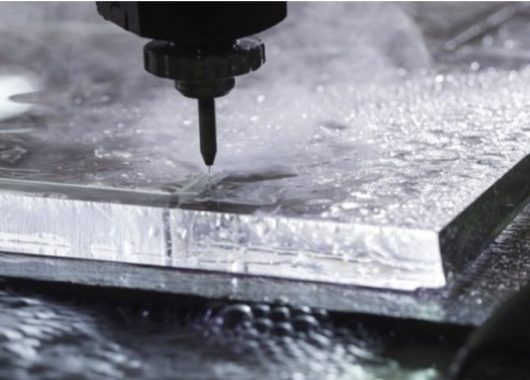
Common Applications: Polycarbonate vs Acrylic across common applications
Greenhouses
Acrylic: Acrylic, also known as Plexiglas or Lucite, is a popular choice for greenhouses due to its transparency, allowing 92% of light to pass through, which is beneficial for plant growth. It’s also lightweight, making it easier to install. However, it’s less impact-resistant than polycarbonate, which could be a concern in areas prone to hail or falling branches. Polycarbonate:
Polycarbonate plastic is a stronger material, with 250 times the impact resistance of glass, making it a more durable choice for greenhouses, especially in harsh weather conditions. It allows 88% of light transmission, slightly less than acrylic, but still sufficient for plant growth. Polycarbonate greenhouses also offer better insulation due to the possibility of multi-wall construction.
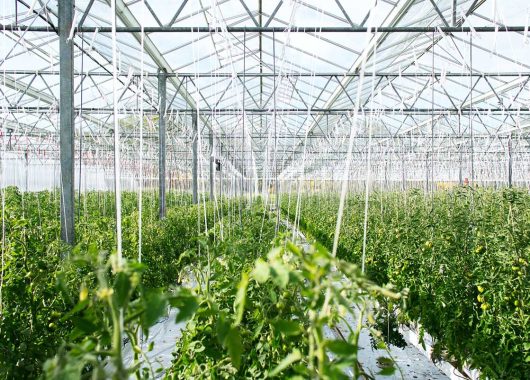
Aquariums
Acrylic: Acrylic plastic sheets are often used in aquarium construction due to their clarity and light weight. They’re 17 times more impact-resistant than glass, reducing the risk of breakage. However, they can scratch easily, which might affect the view over time.
Polycarbonate: Polycarbonate is less commonly used for aquariums due to its lower light transmission (88%) compared to acrylic. However, it offers superior impact resistance, which could be beneficial for large aquariums or public exhibits where durability is a priority.
Safety Glasses
Acrylic: Acrylic safety glasses are lightweight and provide clear vision, making them comfortable for prolonged use. However, they are less impact-resistant than polycarbonate glasses, making them less suitable for high-risk environments.
Polycarbonate: Polycarbonate is the material of choice for safety glasses due to its high impact resistance. It can withstand high-speed particles and is resistant to dents, making it ideal for use in industrial settings.
Vehicle Windows
Acrylic: Acrylic is used in some vehicle windows due to its clarity and UV resistance. It’s also more resistant to scratching than polycarbonate. However, its lower impact resistance makes it less suitable for front windshields.
Polycarbonate: Polycarbonate is commonly used in vehicle windows for its high impact resistance. It’s especially used in off-road vehicles and race cars where safety is paramount. However, it can scratch more easily than acrylic, which can affect visibility over time.
Signage Acrylic
Acrylic, often referred to as Plexiglas or Lucite, is often used for signage due to its glossy finish and wide range of color options. It’s also UV resistant, ensuring the sign’s colors remain vibrant over time. However, it’s less impact-resistant than polycarbonate, which could be a concern for outdoor signs in high-traffic areas.
Polycarbonate: Polycarbonate plastic is a durable choice for signage, especially in areas prone to vandalism or harsh weather conditions. It’s less likely to dent or crack compared to acrylic. However, it has a slightly lower light transmission and can scratch more easily, which might affect the sign’s appearance over time.
Roofing
Acrylic: Acrylic sheets, due to their superior clarity and light transmission, are often used in roofing installations where clear visibility is desired. They provide a clear view of the sky while offering protection from the elements. However, acrylic’s lower impact resistance could be a concern in areas prone to hail or falling debris. The better clarity of acrylic sheets makes them a popular choice for aesthetic roofing applications.
Polycarbonate: Polycarbonate sheets, known for their high impact resistance and durability, are a popular choice for roofing applications. They are particularly useful in areas prone to harsh weather conditions due to their bullet-resistant nature. Polycarbonate sheets, often referred to as Lexan sheets, can be extruded or molded into various shapes, making them versatile for different roofing designs.
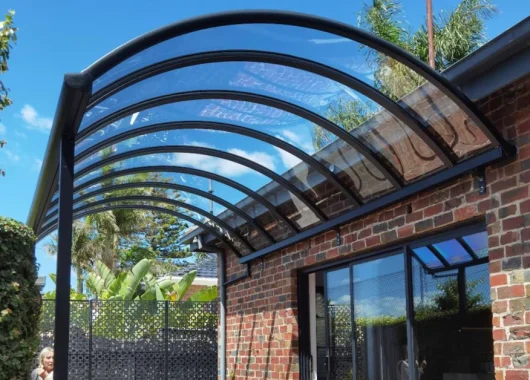
Windows and Glazing
Acrylic: Acrylic plastic, also known as Plexiglass or Perspex, is commonly used for window glazing due to its high clarity and UV resistance. It’s more resistant to scratching than polycarbonate, making it suitable for windows that require a clear view. However, its lower impact resistance makes it less suitable for applications where bullet-resistance is required.
Polycarbonate: Polycarbonate is commonly used for window glazing in high-risk environments due to its high impact resistance. It’s especially used in applications where safety is paramount, such as bullet-resistant windows. However, it can scratch more easily than acrylic, which can affect visibility over time.
Pool Enclosure
Acrylic: Acrylic sheets are often used in pool enclosures due to their high clarity and UV resistance. They allow a clear view of the pool while providing protection from the elements. Acrylic’s resistance to flammability also makes it a safe choice for pool enclosures. However, due to its lower impact resistance, it may not be the best choice for areas prone to harsh weather conditions.
Polycarbonate: Polycarbonate sheets are a more durable choice for pool enclosures, especially in areas prone to harsh weather conditions. They offer high impact resistance, making them less likely to break or crack compared to acrylic. However, they have a slightly lower light transmission and can scratch more easily, which might affect the enclosure’s appearance over time.

Conclusion
Contact Us
For more information don’t hesitate to reach out to us at +86 135 8555 4902 or kerry@exceliteplas.com for personalized quote and expert advice.
Get A Quote Today
Bring Your Ideas to Life with Excelite Plastics.
Custom Polycarbonate Solutions Tailored for You.
Share Your Project With Us!
+86 135 8555 4902

